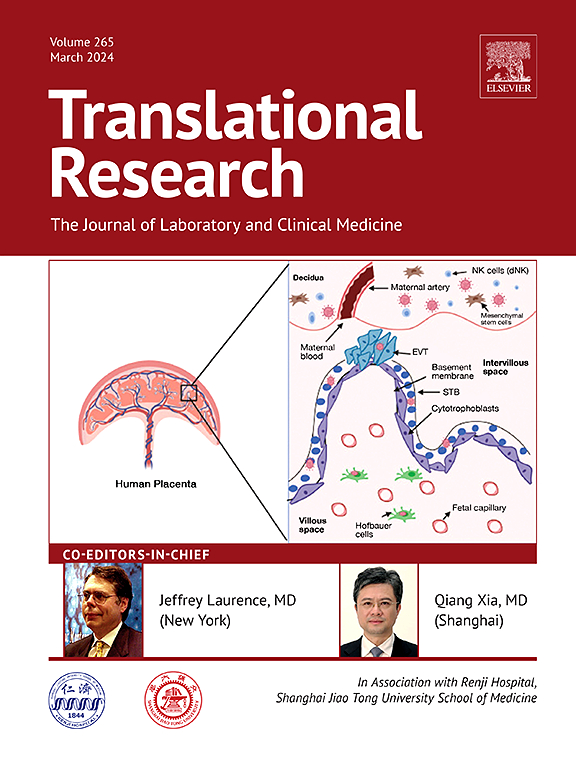Optical coherence tomography for the qualitative analysis of thyroid tissue images: Feasibility, features, and clinical potential
IF 5.9
2区 医学
Q1 MEDICAL LABORATORY TECHNOLOGY
引用次数: 0
Abstract
The most important steps in thyroid surgery include distinguishing benign from malignant lesions and identifying the parathyroid glands. Optical coherence tomography (OCT) provides technical support for intraoperative guidance owing to its real-time, three-dimensional imaging capability. Benign and malignant diagnoses can be confirmed with intraoperative frozen sections; however, current approaches are time-consuming and labor-intensive and do not allow comprehensive, nondestructive tissue assessments. This study aimed to explore the use of OCT for imaging the thyroid tissue by verifying its clinical feasibility and qualitatively analyzing the OCT imaging characteristics of pathological thyroid glands. A customized swept-source OCT (SS-OCT) system was used to collect OCT data corresponding to the pathologies of 61 freshly excised tissue blocks containing either benign or malignant lesions from 45 patients. The OCT images were highly consistent with the H&E histological images, verifying the feasibility of OCT in producing suitable images for analysis. The OCT-derived characteristics of the thyroid tissue were as follows: normal thyroid follicles presented with regularly arranged honeycomb structures; follicular nodular disease (FND) was characterized by heterogeneous nodules composed of follicles of different sizes, with multiple nodules also differing in size and consisting of varied reticular structures and a focally solid appearance; lymphocyte aggregation led to a gray‒black appearance in Hashimoto's thyroiditis tumors; and papillary thyroid carcinoma lesions were characterized by a heterogeneous texture and a low penetration depth. These results demonstrate the imaging capabilities of OCT for thyroid tissue with different pathological conditions and its broad prospects for clinical application.
用于甲状腺组织图像定性分析的光学相干断层扫描:可行性、特征和临床潜力。
甲状腺手术中最重要的步骤包括区分良性和恶性病变以及识别甲状旁腺。光学相干断层扫描(OCT)以其实时、三维成像能力为术中引导提供技术支持。术中冷冻切片可确诊良恶性;然而,目前的方法是耗时和劳动密集型的,不允许全面的,非破坏性的组织评估。本研究旨在通过验证OCT对甲状腺组织成像的临床可行性,定性分析病理甲状腺的OCT成像特征,探讨其应用价值。使用定制的扫描源OCT (SS-OCT)系统收集来自45例患者的61个新鲜切除的组织块的病理对应的OCT数据,这些组织块包含良性或恶性病变。OCT图像与H&E组织学图像高度一致,验证了OCT生成适合分析的图像的可行性。oct衍生的甲状腺组织特征如下:正常甲状腺滤泡呈规则排列的蜂窝状结构;卵泡结节病(FND)的特征是由不同大小的卵泡组成的异质性结节,多个结节大小不一,由不同的网状结构组成,局部呈实性外观;淋巴细胞聚集导致桥本甲状腺炎肿瘤呈灰黑色外观;甲状腺乳头状癌病变具有质地不均、浸润深度低的特点。这些结果显示了OCT对不同病理条件下甲状腺组织的成像能力和临床应用的广阔前景。
本文章由计算机程序翻译,如有差异,请以英文原文为准。
求助全文
约1分钟内获得全文
求助全文
来源期刊

Translational Research
医学-医学:内科
CiteScore
15.70
自引率
0.00%
发文量
195
审稿时长
14 days
期刊介绍:
Translational Research (formerly The Journal of Laboratory and Clinical Medicine) delivers original investigations in the broad fields of laboratory, clinical, and public health research. Published monthly since 1915, it keeps readers up-to-date on significant biomedical research from all subspecialties of medicine.
 求助内容:
求助内容: 应助结果提醒方式:
应助结果提醒方式:


